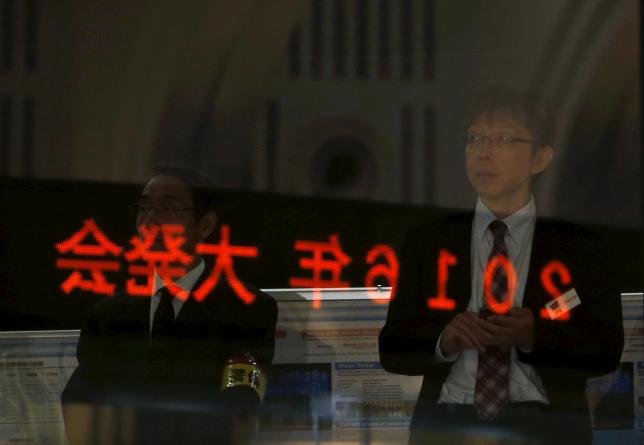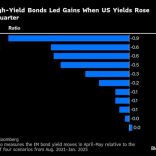Trump's reignited trade war with China clouds IMF, World Bank meetings
Asia shares slump as China sets yuan lower, triggers circuit breaker

Reuters / A visitor waits for the New Year opening ceremony at the Tokyo Stock Exchange (TSE), held to wish for the success of Japan's stock market, in Tokyo, Japan, January 4, 2016.
Asian stocks slid across the board on Thursday after China again guided the yuan sharply lower while Shanghai shares .SSEC tanked more than 7 percent and triggered a stock market circuit breaker for the second time this week. Share trade was suspended for the rest of the day.
The new rules Chinese authorities unveiled this week, which restrict selling by large shareholders, did not go down well with investors, and provided little tonic.
“This is crazy. Chinese regulators set off on this path in July and they cannot get out of it. They have ruined whatever hope investors still had in the market,” said Alberto Forchielli, founder of Mandarin Capital Partners.
With risk sentiment in tatters, spreadbetters forecast a significantly lower open for Britain’s FTSE .FTSE, Germany’s DAX .GDAXI and France’s CAC .FCHI.
MSCI’s broadest index of Asia-Pacific shares outside Japan .MIAPJ0000PUS dropped 2 percent, hitting its lowest level since late September.
Australian shares lost 2.2 percent and South Korea’s KOSPI .KS11 fell 0.8 percent. Japan’s Nikkei .N225 shed 2.2 percent.
The health of the Chinese economy resurfaced as a topic of key concern after rattling the markets last August when Beijing began devaluing the yuan.
“Geopolitical tensions stemming from Saudi-Iran tensions and North Korea’s nuclear test had already heightened the ‘risk off’ mood. Resurfacing China risk was the extra psychological blow to the markets that led to the selloff in equities,” said Takashi Hiroki, chief strategist at Monex Securities in Tokyo.
Shares in Asia extended losses and regional currencies sank on Thursday after the People’s Bank of China (PBOC) set the yuan midpoint rate CNY=SAEC at 6.5646 per dollar prior to the onshore market open, 0.50 percent weaker than the previous fix 6.5314.
It was the biggest fall between daily fixings since August and the eighth day in row for the PBOC to set a lower guidance rate. Spot yuan CNY=CFXS fell to 6.5945 to the dollar, its weakest since February 2011.
Other regional currencies followed suit. Against the dollar the South Korean won KRW= touched a four-month low, the Malaysian ringgit MYR= slumped to a three-month trough and the Singapore dollar SGD= hit a six-year low.
The Australian dollar, often used as a proxy for China-related trades, fell to a two-month low of $0.7025 AUD=D4.
Financial markets fear that Beijing, in a bid to help exporters, is allowing the yuan’s rapid depreciation to accelerate, which would mean China’s economy is even weaker than had been imagined. This could therefore spark another wave of competitive devaluations around Asia and in other key economies.
U.S. Treasuries gained from a consequent flight to quality. The benchmark 10-year note yield US10YT=RR sank nearly 10 basis points to its lowest since mid-December.
The yen, another beneficiary in times of perceived global turmoil, also attracted bids. The dollar fell to a 4-1/2-month low of 117.66 yen JPY=.
The greenback was also weighed down after the Federal Reserve’s December policy meeting minutes suggested further U.S. rate increases would be gradual because of concerns about persistently low inflation. The euro was up 0.4 percent at $1.0824 EUR= with the dollar on the back foot.
Brent crude oil LCOc1 fell to $33.09 a barrel, its lowest since June 2004. Data overnight showed a big build-up in U.S. gasoline stocks, adding to fears of a growing global glut.
Brent crude retreated to a new 11-year low as Chinese economic woes further weakened sentiment that was already made fragile by oversupply concerns, although the oil market has shrugged off geopolitical developments such as Saudi-Iran tensions and North Korea’s nuclear test.












Leave a Reply
Be the First to Comment!
You must be logged in to post a comment.
You must be logged in to post a comment.